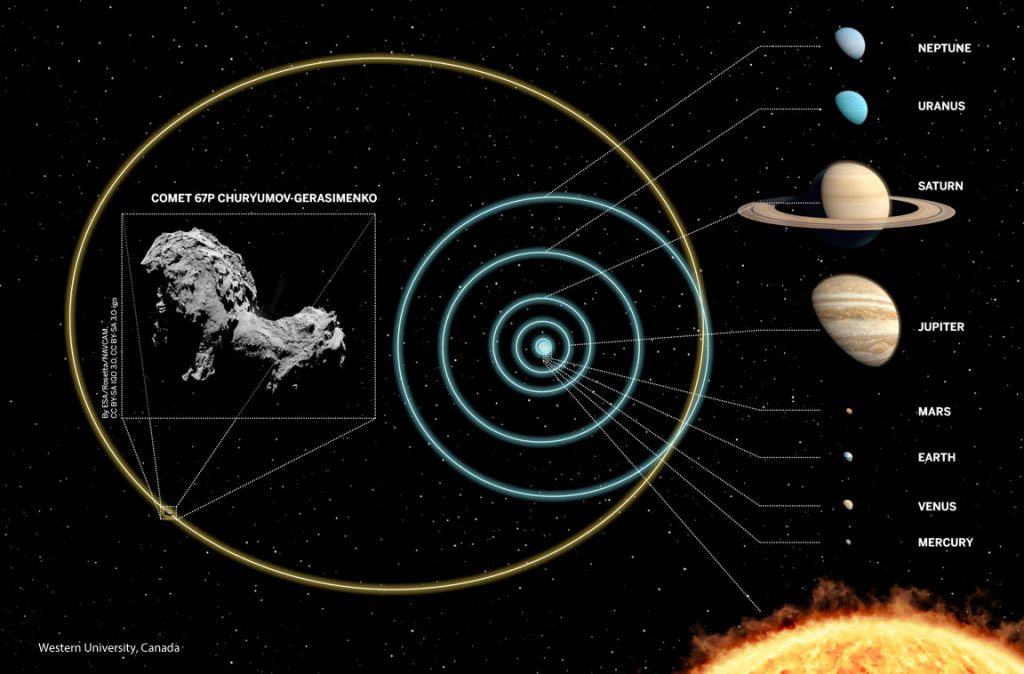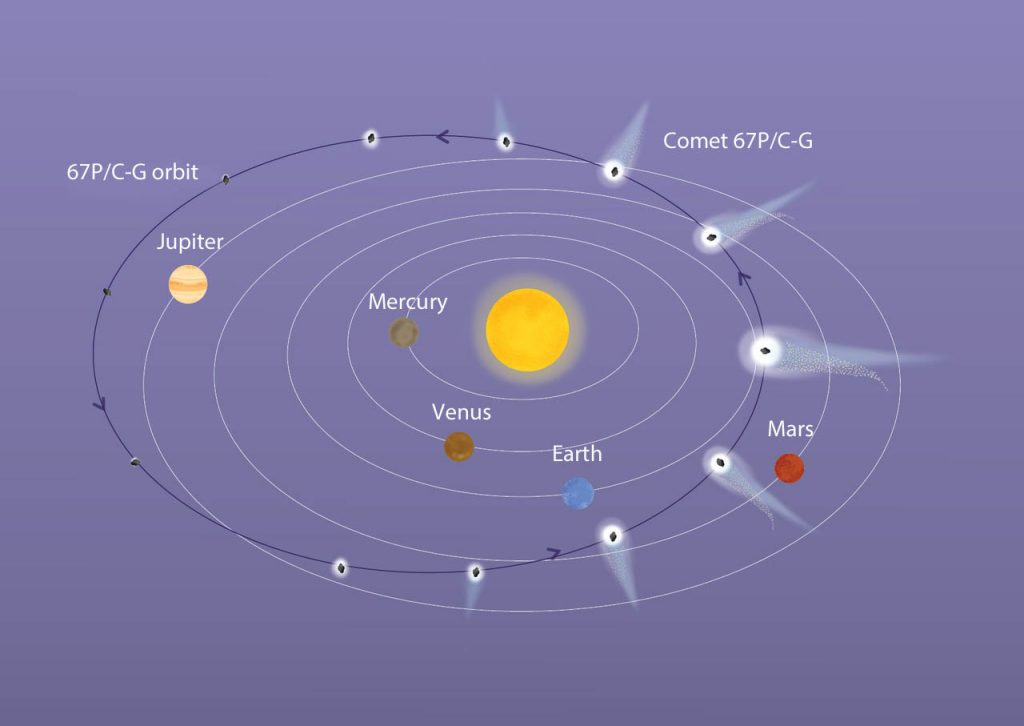
Rosetta’s Comet hails from a cold, dark place. Using statistical analysis and scientific computing, astronomers at Western University in Canada have charted a path that most likely pinpoints comet 67P/Churyumov-Gerasimenko’s long-ago home in the far reaches of the Kuiper Belt, a vast region beyond Neptune home to icy asteroids and comets.
According to the new research, Rosetta’s Comet is relative newcomer to the inner parts of our Solar System, having only arrived about 10,000 years ago. Prior to that, it spent the last 4.5 billion years in cold storage in a rough-and-tumble region of the Kuiper Belt called the scattered disk.

In the Solar System’s youth, asteroids that strayed too close to Neptune were scattered by the encounter into the wild blue yonder of the disk. Their orbits still bear the scars of those long-ago encounters: they’re often highly-elongated (shaped like a cigar) and tilted willy-nilly from the ecliptic plane up to 40°. Because their orbits can take them hundreds of Earth-Sun distances into the deeps of space, scattered disk objects are among the coldest places in the Solar System with surface temperatures around 50° above absolute zero. Ices that glommed together to form 67P at its birth are little changed today. Primordial stuff.
Watch how Rosetta’s Comet’s orbit has evolved since the comet’s formation
There are two basic comet groups. Most comets reside in the cavernous Oort Cloud, a roughly spherical-shaped region of space between 10,000 and 100,000 AU (astronomical unit = one Earth-Sun distance) from the Sun. The other major group, the Jupiter-family comets, owes its allegiance to the powerful gravity of the giant planet Jupiter. These comets race around the Sun with periods of less than 20 years. It’s thought they originate from collisions betwixt rocky-icy asteroids in the Kuiper Belt.
Fragments flung from the collisions are perturbed by Neptune into long, cigar-shaped orbits that bring them near Jupiter, which ropes them like calves with its insatiable gravity and re-settles them into short-period orbits.

Mattia Galiazzo and solar system expert Paul Wiegert, both at Western University, showed that in transit, Rosetta’s Comet likely spent millions of years in the scattered disk at about twice the distance of Neptune. The fact that it’s now a Jupiter family comet hints of a possible long-ago collision followed by gravitational interactions with Neptune and Jupiter before finally becoming an inner Solar System homebody going around the Sun every 6.45 years.
By such long paths do we arrive at our present circumstances.


Cool video animation Bob, I like! It shows very clearly how orbitals process through time.
Aqua,
Yes, I like too. But I wondered in writing this if an impact wasn’t also involved as it is for other scattered disk objects.